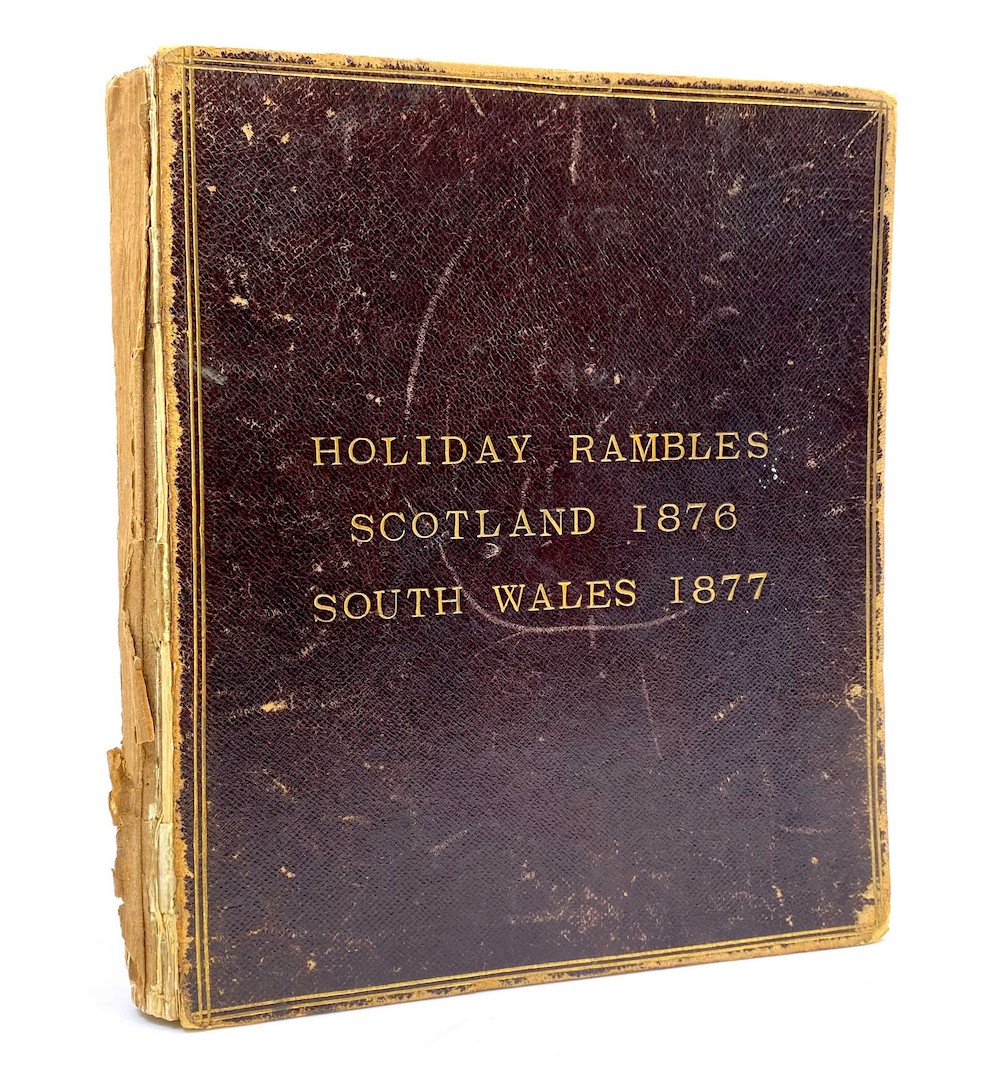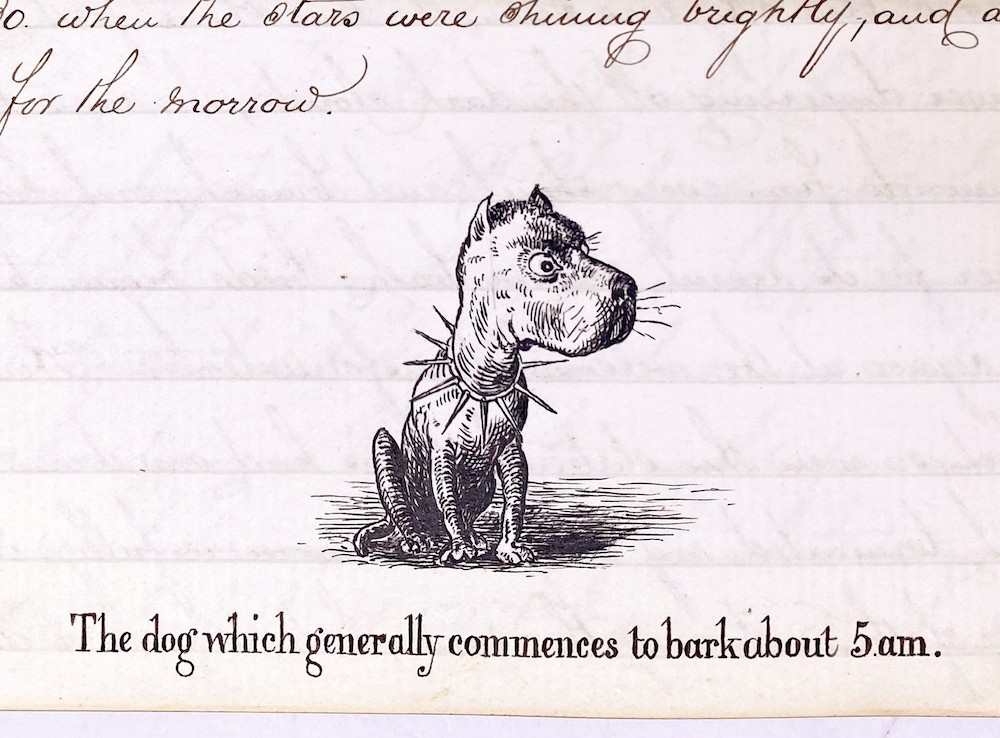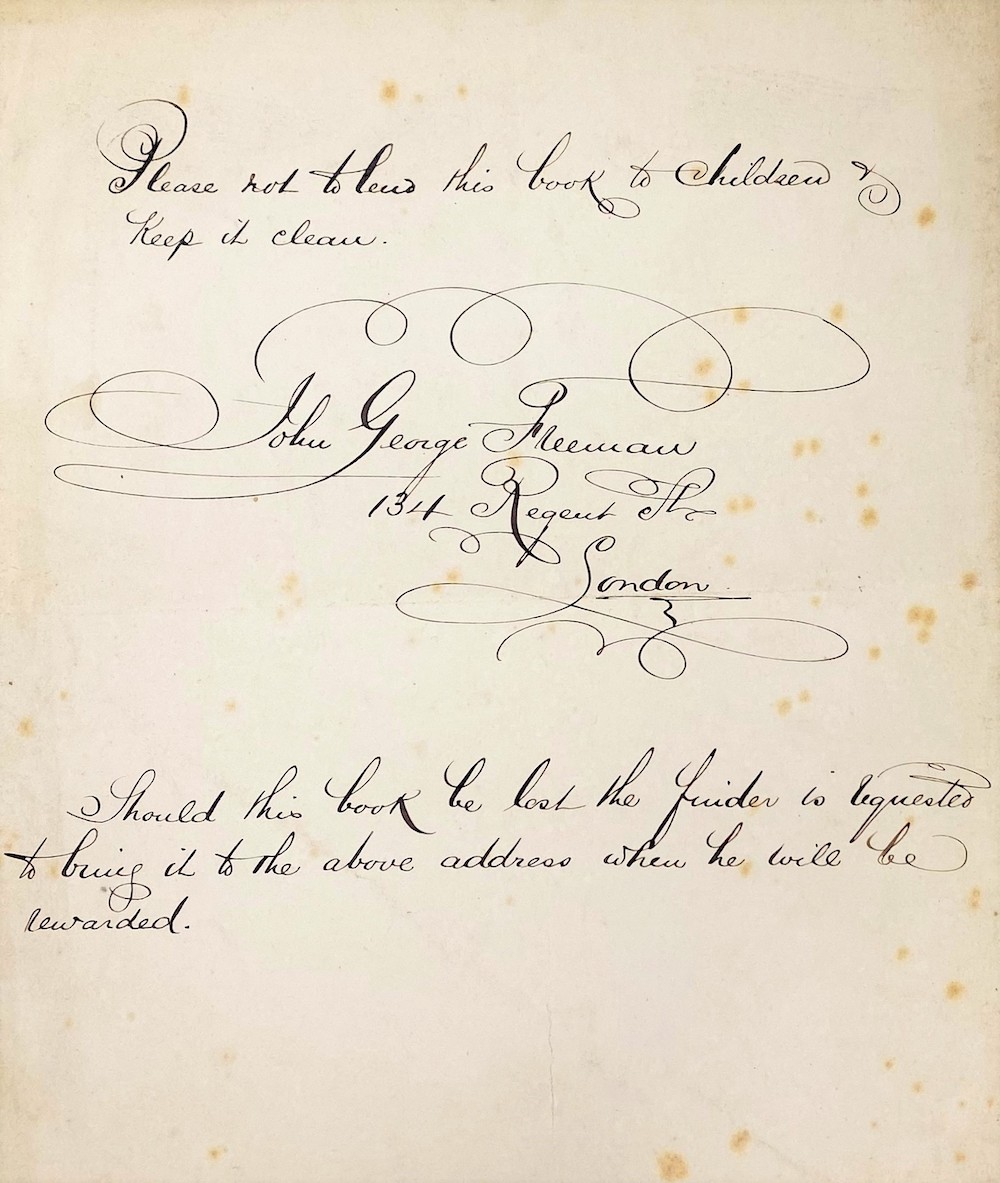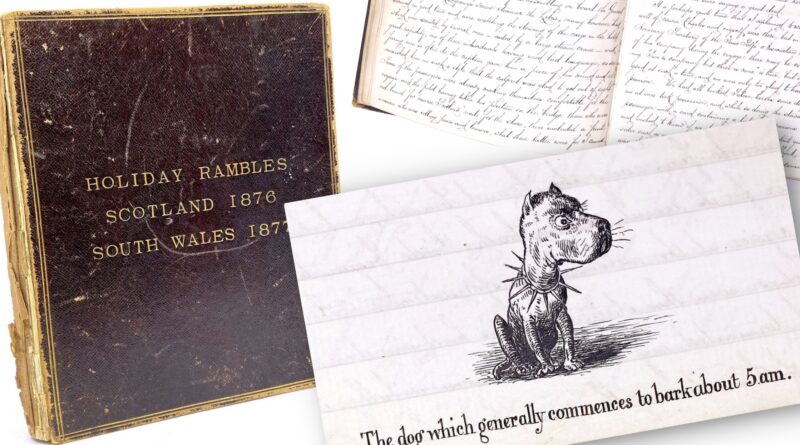Victorian travel journal is entertaining read
 A newly-discovered 150-year-old Victorian travel journal has been compared to film Trains, Planes and Automobiles by auction house, Hansons, thanks to the dry humour of its writing and sketches.
A newly-discovered 150-year-old Victorian travel journal has been compared to film Trains, Planes and Automobiles by auction house, Hansons, thanks to the dry humour of its writing and sketches.
Holiday Rambles – Scotland 1876 South Wales 1877, penned by John George Freeman of Regent Street, London, documents his tour of Britain. He describes a multitude of incidents including nights disturbed by a donkey, cock, cat and drunks and a singer whose voice left him unable to disguise his agony.

Such is the entertainment value, a books expert believes the forgotten tome is worthy of a TV travel series – and could spark a bidding war. It’s set to go under the hammer at the Derbyshire auctioneers March 7 with a guide price of £4,000-£5,000.
Freeman and his two brothers explored Scotland and Wales, the latter being where the journal was discovered. The manuscript was gifted to a Hay-on-Wye cafe owner by her father 20 years ago. She has no idea how he acquired it, she only knows she loves it. She’s always been amazed by the fact it does not contain a single error or ink smudge despite containing hundreds of pages.

She said: “Who wouldn’t love it? It’s so beautifully done. The time it must have taken to put it together! Not a single error over all those pages. I’ve always loved handwriting and this is immaculate stylish and incredible. I live in Wales and he mentions the very town I live in! I was glued to these paragraphs. I’m selling it now because I want others to enjoy it. It’s been sat in a safe. What’s the point of that?”
Jim Spencer, head of books and works on paper at Hansons, said: “As soon as I started flicking through the pages I was reminded of Michael Portillo’s Great British Railway Journeys TV series which was inspired by George Bradshaw’s Handbook to Rail Travel. But I was quickly swept along by the comedy of the author’s peevishness – it’s actually closer to the brilliant John Hughes’ film, Planes, Trains and Automobiles.

“It’s a joy to read. It is copiously filled with handwritten entries on 200 pages, embellished with 62 charming ink and watercolour illustrations and cartoons. The descriptions of irritating passengers, eccentric characters, inadequate food, and the inability to sleep in strange hotels all make for a wonderful comedy – which is certainly intentional. Everything is expertly delivered in the author’s dry, erudite prose.
“He describes travelling on steamers and trains, long excursions on foot, hotels, food, scenery and weather. And he valued his journal so highly a loosely-inserted manuscript leaf states, ‘Please not to lend this book to children & keep it clean’. He also offered a reward for returning it to his address if lost.
“The beautiful illustrations have been painstakingly executed in fine detail. The style reminds me so much of Three Men in a Boat and The Diary of a Nobody, two of my favourite novels. It pre-dates both of these famous works, yet it wasn’t published and celebrated in the same way. This is what I love most about my job, putting a spotlight on finds like this and sharing them with the world.” He added: “Some of Freeman’s diaries formed the basis for Three Men and a Bradshaw: An Original Victorian Travel Journal, edited by Ronnie Scott. That underlines its importance which is why I am guiding it at £4,000-£5,000.”

In one extract John writes, ‘After a very uncomfortable night’s rest which was disturbed by a donkey, cock, and cat – doubtless they were anticipating the enjoyments of the coming bank holiday – we rose.’
He also described the pain of enforced entertainment:, ‘A young lady was trying to sing songs to a pianoforte accompaniment, at first it was endurable but afterwards she attempted something much beyond her capability and was evidently “feeling” for the notes, I suppose my face indicated the agony I endured as the question was asked ‘Do you object to the music (?) Sir?’ to this I replied it was rather difficult to write at the same time (which I was trying to do).’
Another extract describes a rocky night on a boat, ‘Usually I manage to go to sleep almost immediately, but then our house at Regent St is a stationary one, and I did not seem to take kindly to the continued motion of the boat…to my surprise I found two ladies and four gentlemen had made themselves beds and intended to pass the night in the open air, the latter were lying on their backs and singing ‘Hold the Fort’ with not a very charming effect.

‘On nearing our destination, a very stout individual (who must have weighed quite sixteen stone) accosted us, and desired to know ‘why we wore those white things on our heads?’ On being told it was to protect them from the sun’s rays he seemed to think it was a splendid idea, saying it was quite time he did something in that direction, as he had suffered very much from the late extreme heat (he was about 60 years of age, and walking about without any coat).
‘He appealed to one of his countrymen as to the utility of the invention, but this gentleman was of a taciturn disposition and declined to pass an opinion on the subject, still if the reader should at any time happen to be passing near Buchlyvie (village in the Stirling area of Scotland) and see a very obese individual wearing a puggaree, (scarf tied round a sun helmet) he will of course at once know how to account for so curious a sight’.
Jim said: “The incidental detail and descriptions of the mundane, give a real insight into the period, delivered with dry humour. It’s comedy gold.”

